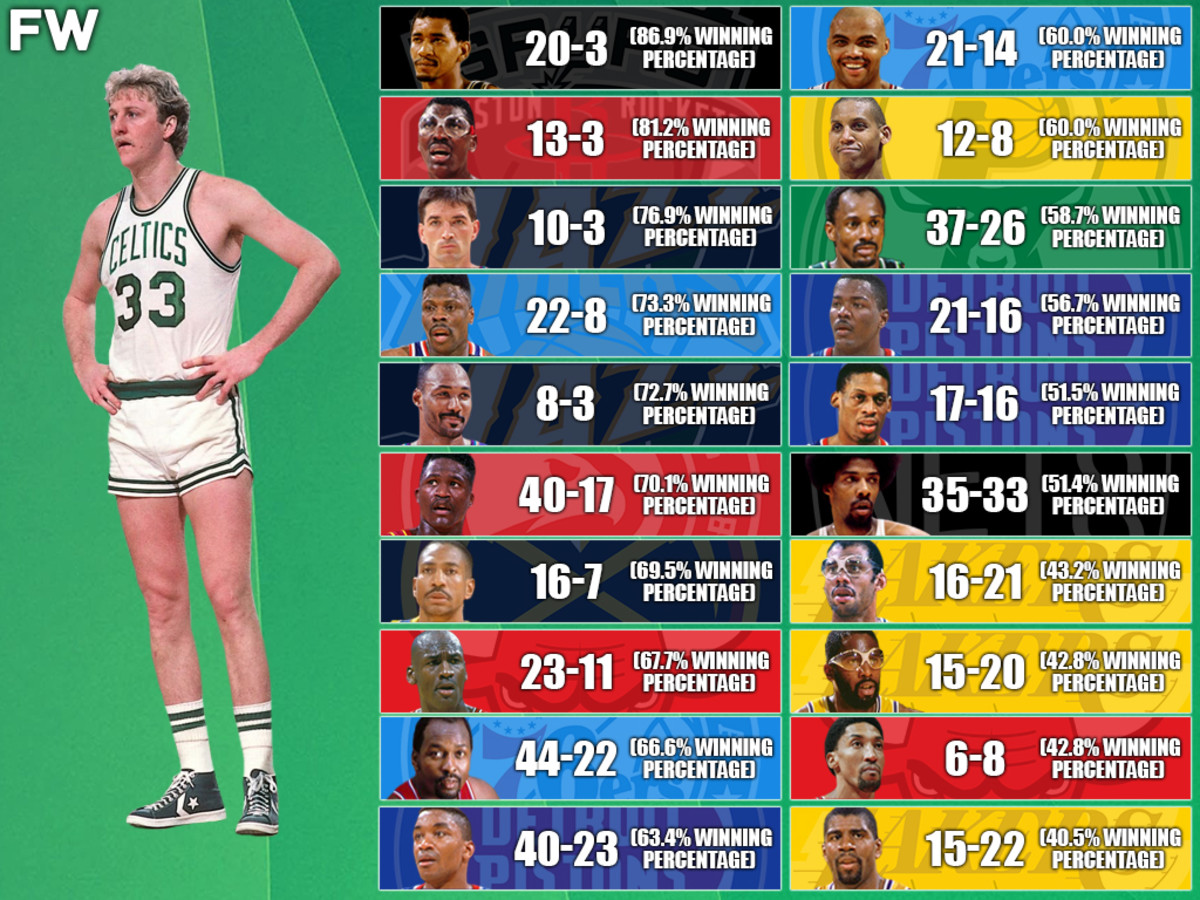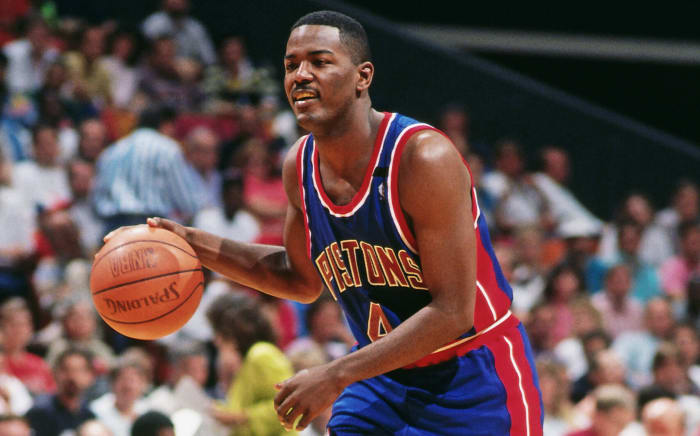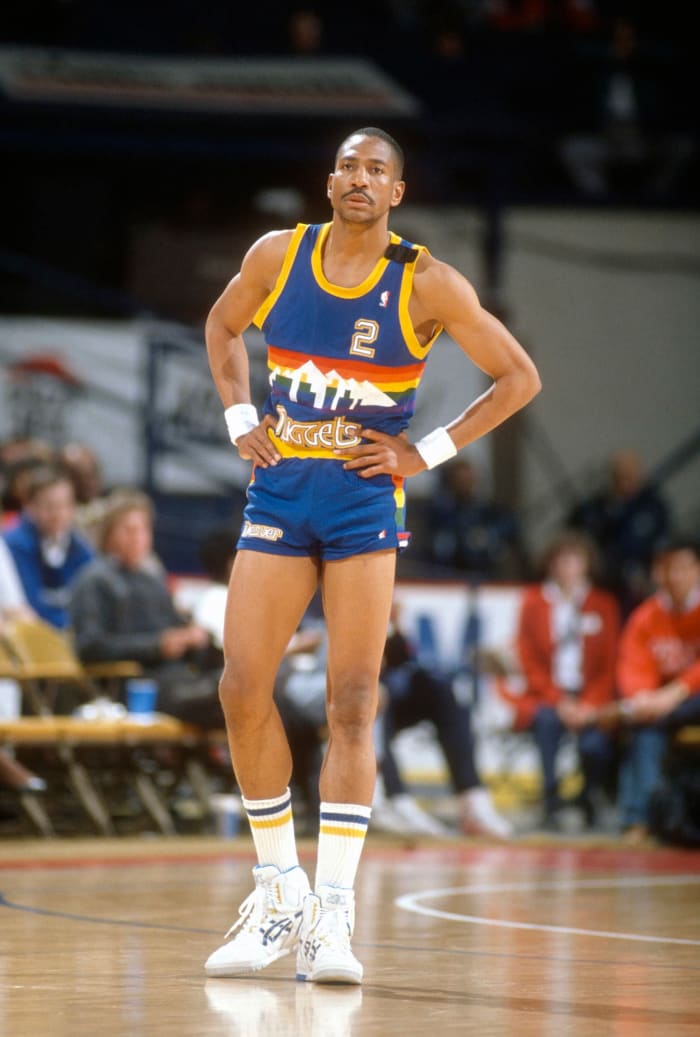When you think of the best players in the 80s, Kareem Abdul-Jabbar, Magic Johnson, and Isiah Thomas. The best player of that generation was potentially Larry Bird. When it came to some of the noteworthy legends from this time, Bird found a way to not just win these games, but dominate for a long period of time.
Some legends from this period were able to lead their team past Bird. Specifically, there was one team that was the heel of the Boston Celtics and those three players from the Showtime Lakers found a way. Three of the four legends from this era own a winning record against Bird and they played for the Lakers.
Among the other NBA legends from the 80s, here is Bird’s career record against those players.
Magic Johnson – 37 Games, 15-22 (40.5%)
Regular Season: 21.7 PPG, 10.9 RPG, 6.2 APG, 50.0 FG%, 47.4 3-PT% (7-11)
Playoffs: 25.3 PPG, 11.1 RPG, 4.6 APG, 1.7 SPG, 1.0 BPG, 46.0 FG%, 47.8 3-PT% (8-11)
The player that owns the best overall record against Bird was Magic Johnson. During their heyday, the Lakers and Celtics met in the NBA Finals three times where the Lakers won two championships. The Celtics won one championship in 1984. The playoffs saw Bird turn into a different player where he was a more dominant scorer.
With that said, Johnson and Bird are even in the Finals with one Finals MVP each. In the end, Johnson led his Lakers to more wins against Bird. Every player has that one player that had their number. For Bird, it was Johnson.
Scottie Pippen – 14 Games, 6-8 (42.8%)
Regular Season: 25.9 PPG, 8.3 RPG, 6.1 APG, 1.0 SPG, 0.6 BPG, 50.3 FG%, 45.0 3-PT% (6-8)
Playoffs: None
When you read earlier about one player outside of the Lakers trio having a winning record, you might have thought about Michael Jordan. Instead, it is the other Chicago Bulls great in Scottie Pippen. Pippen joined the Bulls later in the 80s, which was when Bird began to get a little older and the Bulls began to develop chemistry between Pippen and Jordan.
In Bird’s later years, the Bulls found a way to win more games. It came at the expense of Jordan losing quite a few more games. Even so, Bird nearly went .500 against the Bulls even in the latter stages of his career.
James Worthy – 35 Games, 15-20 (42.8%)
Regular Season: 23.2 PPG, 11.4 RPG, 6.6 APG, 1.9 SPG, 0.6 BPG, 49.8 FG%, 52.6 3-PT% (7-9)
Playoffs: 25.3 PPG, 11.1 RPG, 4.6 APG, 1.7 SPG, 1.0 BPG, 46.0 FG%, 47.8 3-PT% (8-11)
Worthy won three championships with the Lakers but won two championships specifically against Bird and the Celtics in 1985 and 1987. In the regular season, he played two fewer games than Johnson but managed a winning record against Bird while on the floor. What stands out the most is that Bird shot nearly 50% from the field against Worthy and over 50% from the three-point range.
Those numbers were near the same in the playoffs as well, but the Lakers came out on top in the majority. Like Johnson, Bird was unable to take a winning record against the Lakers and finished with exactly three championships, like Worthy, at the end of his career.
Kareem Abdul-Jabbar – 37 Games, 16-21 (43.2%)
Regular Season: 22.1 PPG, 11.5 RPG, 6.2 APG, 52.3 FG%, 53.3 3-PT% (8-10)
Playoffs: 25.3 PPG, 11.1 RPG, 4.6 APG, 1.7 SPG, 1.0 BPG, 46.0 FG%, 47.8 3-PT% (8-11)
Despite Abdul-Jabbar being a solid defensive player for the Lakers, Bird shot over 50% inside and outside the arc. Abdul-Jabbar was a stellar defensive player that could guard the outside if needed. Despite all of this, Bird managed double-digit rebounds and shot lights out. He was also just one win away from finishing .500 against the Hall of Famer.
Like Johnson and Worthy, Abdul-Jabbar won two championships against Bird, which included winning Finals MVP in 1985. When it was all said and done, each of the three winning Lakers won a Finals MVP against Bird at some point. Looking back, that is a lot of talent on the floor at the same time.
Julius Erving – 68 Games, 35-33 (51.4%)
Regular Season: 23.8 PPG, 10.8 RPG, 6.2 APG, 1.7 SPG, 0.8 BPG, 46.9 FG%, 36.2 3-PT% (23-21)
Playoffs: 22.1 PPG, 12.4 RPG, 5.5 APG, 2.1 SPG, 1.3 BPG, 44.3 FG%, 31.8 3-PT% (12-12)
The Celtics and 76ers are in the same division and are fairly near each other in location. This was a true rivalry with Erving playing for Philadelphia. Erving nearly finished his career .500 against Bird, but Bird got the last laugh while managing to average a double-double.
The playoffs were equally entertaining given that Bird finished with a 12-12 record against Erving. The 76ers were no slouch during the 80s, having won a championship of their own. It was a constant battle with this team no matter where they played.
Dennis Rodman – 33 Games, 17-16 (51.5%)
Regular Season: 24.7 PPG, 8.0 RPG, 6.9 APG, 1.0 SPG, 1.1 BPG, 48.7 FG%, 45.9 3-PT% (9-6)
Playoffs: 20.9 PPG, 9.8 RPG, 6.2 APG, 1.5 SPG, 0.9 BPG, 41.7 FG%, 25.0 3-PT% (8-10)
It’s no surprise that Bird’s rebounding total took a tumble compared to other legends when he played Rodman. Bird mustered a winning record against Rodman for the most part despite the Pistons rising to the top of the conference in the late 80s. Rodman averaged just four points against Bird, who averaged 20 more points.
The playoffs were a different story where the Pistons were the best team in the East in 1988, 1989, and 1990. The 1989 playoffs saw the Pistons eliminate the Celtics in the first round. That was revenge for when the Celtics eliminated the Pistons in the 1987 Eastern Conference Finals.
Joe Dumars – 37 Games, 21-16 (56.7%)
Regular Season: 26.8 PPG, 8.6 RPG, 6.8 APG, 1.1 SPG, 0.7 BPG, 50.3 FG%, 45.5 3-PT% (13-6)
Playoffs: 20.9 PPG, 9.8 RPG, 6.2 APG, 1.5 SPG, 0.9 BPG, 41.7 FG%, 25.0 3-PT% (8-10)
Another member from those tough teams in the late 80s was the 1989 NBA Finals MVP in Dumars. Both Rodman and Dumars played the same amount of games against Bird in the playoffs. That is why his stats are the same.
As for the regular season, Bird and Dumars have a few more matchups where Bird got the best of the Pistons. Bird was efficient on both ends of the floor as well. While this record is great against Dumars, wait until you see what he did against the best player on that Pistons team.
Sidney Moncrief – 63 Games, 37-26 (58.7%)
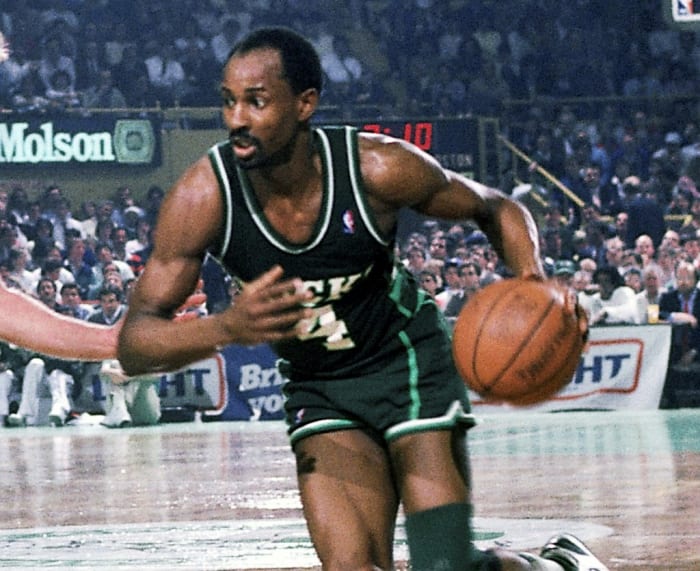
Regular Season: 21.7 PPG, 9.7 RPG, 5.1 APG, 1.2 SPG, 0.6 BPG, 49.5 FG%, 28.2 3-PT% (26-19)
Playoffs: 26.5 PPG, 10.3 RPG, 7.1 APG, 2.3 APG, 0.6 BPG, 48.3 FG%, 42.4 3-PT% (11-7)
Given that the Milwaukee Bucks were in the East, the matchup of Bird and Moncrief was pretty regular. Moncrief, the first and second-ever winner of the Defensive Player of the Year, was known for his defense and guarding the best player. While those stats of their one-on-one matchups are nowhere, Bird still managed nearly a double-double against him.
What Moncrief can say is that he held Bird to a very poor three-point shooting percentage in the regular season. In the playoffs, that was a different story as the Celtics reigned supreme. His playmaking took a turn, but his scoring and efficiency did not.
Reggie Miller – 20 Games, 12-8 (60.0%)
Regular Season: 24.5 PPG, 9.5 RPG, 6.8 APG, 1.2 SPG, 0.7 BPG, 46.0 FG%, 39.1 3-PT% (9-6)
Playoffs: 20.8 PPG, 8.4 RPG, 8.6 APG, 1.2 SPG, 0.4 BPG, 42.9 FG%, 7.1% 3-PT% (3-2)
Every three wins Reggie Miller would steal one against Bird, but for the most part, Bird was dominant against the Pacers. Miller, who would end his career as the all-time leader in three-point field goals, should be impressed with Bird and his shooting percentage. He had the talent to go toe to toe with Miller back in the day.
As for the playoffs, the two only played five games and his three-point shooting was not a factor. He shot 7.1% from behind the arc. The team narrowed in on him as most of his numbers were down, but pay attention to his assists average and how he was able to get his teammates more involved. That’s a true sign of a great player adapting to his defensive assignment.
Charles Barkley – 35 Games, 21-14 (60.0%)
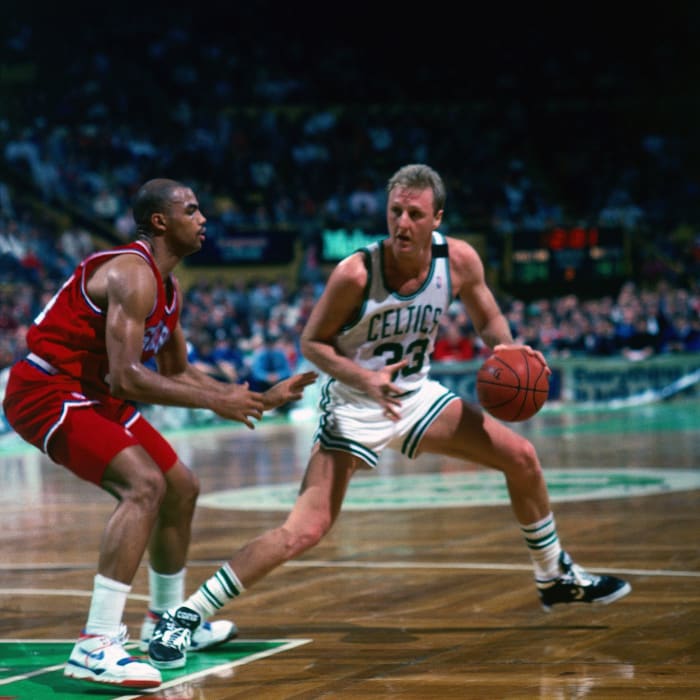
Photo by Dick Raphael/NBAE via Getty Images
Regular Season: 23.8 PPG, 8.5 RPG, 7.0 APG, 1.5 SPG, 0.7 BPG, 50.3 FG%, 39.5 3-PT% (17-13)
Playoffs: 20.8 PPG, 7.2 RPG, 6.0 APG, 2.6 SPG, 1.4 BPG, 41.9 FG%, 33.3 3-PT% (4-1)
Once Erving was gone, there was a new face leading the 76ers. This face had a tougher time beating Bird than Erving. Barkley lost 60% of the time to Bird, while Bird nearly made the 50-40-90 Club. What is more impressive is that Barkley was known for being a physical, strong rebounder. Bird still managed to average 8.5 rebounds per game in 20 regular-season contests.
The playoffs saw the two teams meet once. The Celtics won the series in five games and Bird still managed a productive stat line, specifically on the defensive side. He was able to use steals and blocks to get points on the other end.
Isiah Thomas – 63 Games, 40-23 (63.4%)
Regular Season: 26.3 PPG, 10.1 RPG, 6.7 APG, 48.6 FG%, 38.7 3-PT% (29-12)
Playoffs: 23.5 PPG, 10.1 RPG, 6.4 APG, 1.4 SPG, 1.0 BPG, 42.6 FG%, 20.6 3-PT% (11-11)
The best player in the Pistons dynasty was one of Bird’s biggest victims. Thomas was nearly defeated 30 times by Bird’s Celtics. On top of that, Bird was stellar in scoring, rebounding, and shooting the ball. This ran through the entire 80s, so it was safe to say that Bird was the dominant player.
With that said, Thomas held his own in the playoffs. Out of 22 playoff games, Thomas split with Bird, which included eliminating the Celtics once. Thomas proved to be a tough opponent to oust when the spotlight was shining.
Moses Malone – 66 Games, 44-22 (66.6%)
Regular Season: 24.9 PPG, 10.0 RPG, 6.6 APG, 1.6 SPG, 0.9 BPG, 52.0 FG%, 35.2 3-PT% (32-19)
Playoffs: 18.5 PPG, 10.7 RPG, 6.4 APG, 2.2 SPG, 0.7 BPG, 44.5 FG%, 26.7 3-PT% (12-3)
Malone might have won a championship with Erving in 1983 with the 76ers, but these two were frequent opponents. In 51 regular-season games, Bird averaged a double-double and won two out of three games when playing against each other. Across the board, Bird’s stat line is exceptional.
The playoffs were a different breed for Bird. For every five playoff games, Bird was going to win four times. Malone never beat Bird in a playoff series either. Bird averaged a double-double and nearly shot 45% from the field in the playoffs.
Michael Jordan – 34 Games, 23-11 (67.7%)
Regular Season: 26.9 PPG, 8.6 RPG, 6.4 APG, 1.4 SPG, 0.9 BPG, 49.8 FG%, 46.9 3-PT% (17-11)
Playoffs: 27.2 PPG, 9.0 RPG, 8.5 APG, 1.5 SPG, 0.8 BPG, 53.1 FG%, 46.2 3-PT% (6-0)
Before Jordan became the GOAT, he had to learn from his mistakes against Bird. When Jordan was winning his first MVP and Defensive Player of the Year, he still had to find a way to get past Bird, which he failed to do. In six playoff games, Jordan never beat Bird one time.
In the regular season, Jordan’s Bulls put up a fight on occasions. In the end, Bird was supreme there as well. There are not too many players that can say that they had Jordan’s number. Imagine a world where the two were both in their prime in 1993. Who would win?
Alex English – 23 Games, 16-7 (69.5%)
Regular Season: 23.6 PPG, 11.6 RPG, 6.1 APG, 1.6 SPG, 1.1 BPG, 50.4 FG%, 23.8 3-PT% (16-7)
Playoffs: None
The all-time great Nuggets scorer could put up the points against Bird but nearly lost 10 times more. Bird had his issues shooting the deep ball against these teams, but was still able to make half of his shots. That also included averaging a double-double of 23 points and 11 rebounds.
The Nuggets were fairly competitive during this time as well. This was no easy win, especially with English on the team. In the end, Bird was also exceptional defensively, averaging 1.6 steals and 1.1 blocks per game.
Dominique Wilkins – 57 Games, 40-17 (70.1%)
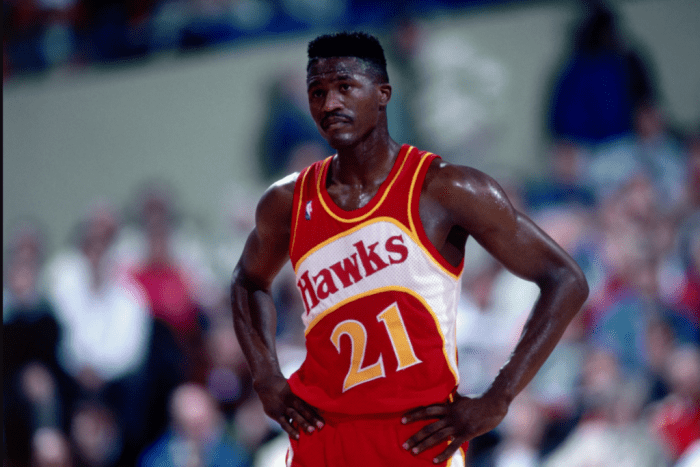
Regular Season: 25.0 PPG, 8.8 RPG, 6.2 APG, 1.4 SPG, 0.7 BPG, 50.0 FG%, 28.7 3-PT% (30-12)
Playoffs: 25.9 PPG, 9.5 RPG, 6.9 APG, 1.4 SPG, 0.7 BPG, 49.7 FG%, 34.5 3-PT% (10-5)
With Wilkins playing most of his career in the Eastern Conference, the two greats often met in the regular season. Bird won 30 of the 42 meetings in the regular season. That included shooting 50% from the field and scoring 25.0 points per game.
In the playoffs, the two met 15 times and Bird won 10 games. The Hawks were not prime contenders during the 80s but were a contender for the playoffs and a first-round opponent. The Celtics eliminated the Hawks in the playoffs in 1983, 1986, and 1988. The later date featured a seven-game series.
Karl Malone – 11 Games, 8-3 (72.7%)
Regular Season: 27.5 PPG, 8.0 RPG, 6.4 APG, 2.3 SPG, 0.5 BPG, 48.5 FG%, 36.1 3-PT% (8-3)
Playoffs: None
Malone’s success took off after Bird was out of the league. It wasn’t until 1997 and 1998 that the Jazz made the NBA Finals and Malone was named MVP. Had these two played in their prime at the same time, we might be talking about a different outcome. Bird got the best of a younger Malone despite being older at the time.
The two teams never met in the NBA Finals, so the two would have never met in the playoffs. When looking at the stat line, Bird’s 2.3 steals stand out the most, while his 27.5 points per game were one of his higher scoring averages among the NBA legends.
Patrick Ewing – 30 Games, 22-8 (73.3%)
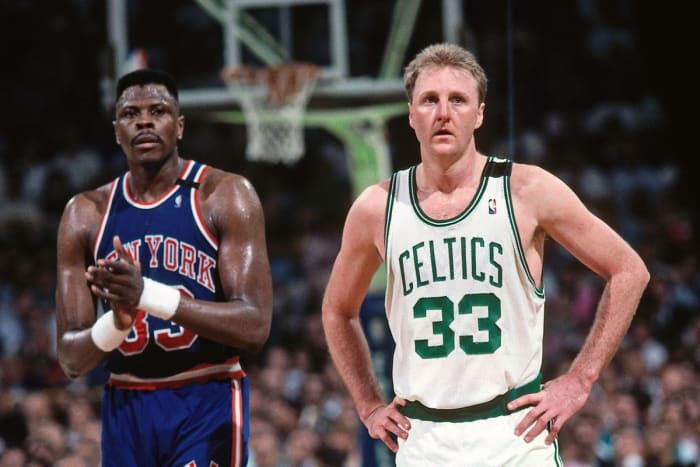
Photo by Dick Raphael/NBAE via Getty Images
Regular Season: 25.3 PPG, 10.2 RPG, 6.8 APG, 2.1 SPG, 0.7 BPG, 44.1 FG%, 38.5 3-PT% (17-4)
Playoffs: 26.1 PPG, 7.7 RPG, 8.4 APG, 1.8 SPG, 0.6 BPG, 46.1 FG%, 32.1 3PT% (5-4)
Ewing was supposed to be one of the best centers in the league. Overall, he leads a legacy as a strong rebounder and a decent rim protector. However, Bird managed to get to the rack effortlessly to average 25.3 points and pull down 10.2 rebounds. Out of 21 games in the regular season, Bird won 17 times.
The market of New York was held hostage with Bird playing at this time and it didn’t matter that Ewing was playing. That goes for the playoffs as well, where Bird was Luka Doncic-type of numbers against Ewing’s Knicks. With Bird in the way, New York wasn’t going to make a run, which is why they saw more success in the 90s.
John Stockton – 13 Games, 10-3 (76.9%)
Regular Season: 27.2 PPG, 8.5 RPG, 6.6 APG, 3.0 SPG, 0.8 BPG, 50.0 FG%, 37.5 3-PT% (10-3)
Playoffs: None
Bird has his highest steals total against one of the best ball handlers in the game’s history. Stockton remains the all-time leader in assists, so how did Bird manage 3.0 steals against his teams? Either Stockton was throwing the ball around, or it was all on his teammates, which seems like a stretch.
You can take the name off the jersey and see a line of 27.2 points, 8.5 rebounds, 6.6 assists, and 3.0 steals, and you are talking about an MVP for the season. In 13 games, Bird averaged these stats against the Jazz, while shooting 50% from the field. These are legendary numbers.
Hakeem Olajuwon – 16 Games, 13-3 (81.2%)
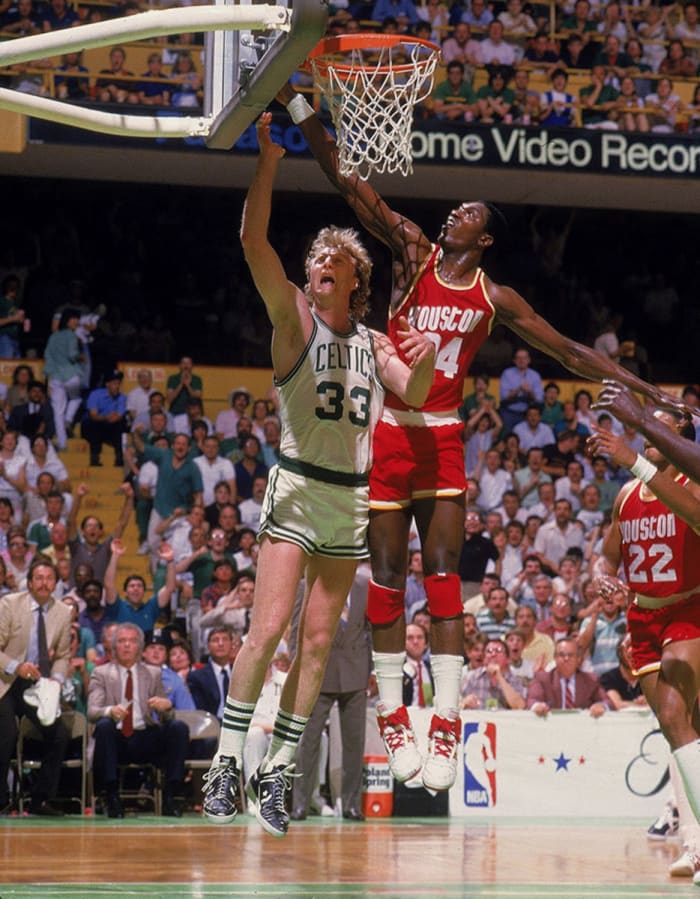
Credit: John Iacono for Sports Illustrated
Regular Season: 30.2 PPG, 11.9 RPG, 7.0 APG, 2.2 SPG, 0.9 BPG, 51.1 FG%, 38.1 3-PT% (9-1)
Playoffs: 24.0 PPG, 9.7 RPG, 9.5 APG, 2.7 SPG, 0.3 BPG, 48.2 FG%, 36.8 3-PT% (4-2)
Speaking of legendary numbers, Bird had a field day when playing Hakeem Olajuwon and the Rockets during Olajuwon’s early years. Bird only has one player that he averaged 30 points against and it is the all-time great in Olajuwon. In the regular season, Bird played 10 times and lost just once.
The playoffs saw the Celtics meet the Rockets in the 1986 NBA Finals. Olajuwon was still developing into an elite player but was a key contributor to the team. The Celtics won the Finals in six games to cap off a season that saw Bird win MVP and Finals MVP.
George Gervin – 23 Games, 20-3 (86.9%)
Regular Season: 23.8 PPG, 10.2 RPG, 6.1 APG, 2.2 SPG, 0.9 BPG, 50.5 FG%, 47.4 3-PT% (18-3)
Playoffs: 33.0 PPG, 9.0 RPG, 8.0 APG, 2.0 SPG, 1.0 BPG, 57.5 FG%, 50.0 3-PT% (2-0)
The player that should have hated playing Bird the most, but probably won’t admit to it, is George Gervin. The great San Antonio Spurs player couldn’t figure out how to beat him. Bird nearly shot 50/50 from inside and outside the arc while playing him. Throw in a double-double on top of that with six assists and you are talking about numbers that pop out from a video game.
The only time the two met in the playoffs was in the first round of 1977. At the time, the series was a best of three and the Celtics swept the series. In that series, Bird did shoot 50/50 from the field in what is one of the greatest accomplishments one could do.
